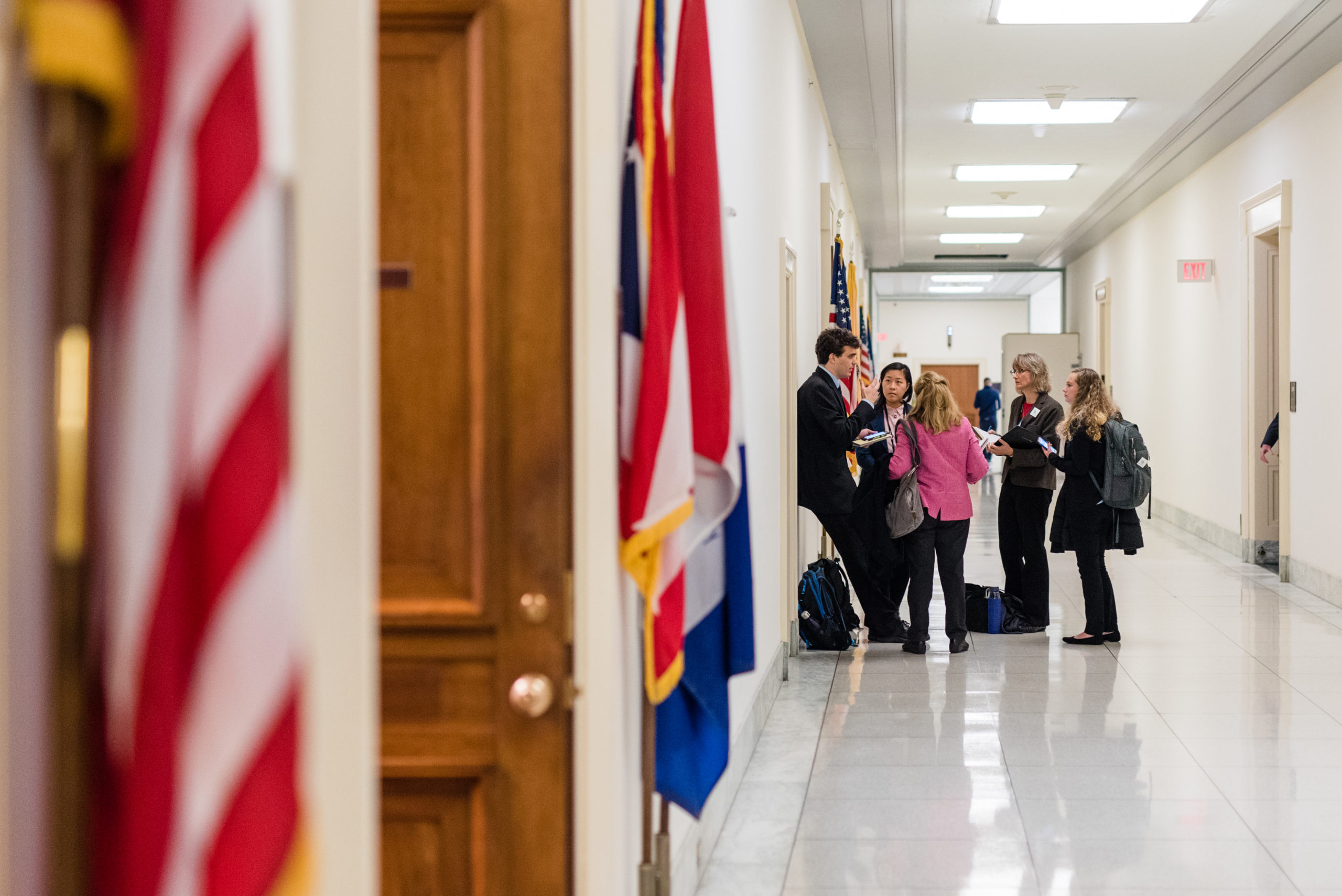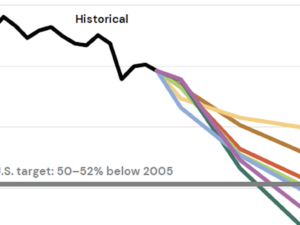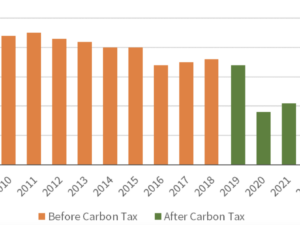By Dana Nuccitelli
Inflation — the decline of purchasing power as prices rise — is currently at its highest level in 30 years. This has led to concern among the public and policymakers about the rising costs of many important products like food, shelter, gasoline, electricity, and cars. Senator Joe Manchin has said he will not “support a package that risks hurting American families suffering from historic inflation.” As a result, CCL has received many inquiries from congressional offices, volunteers, and other stakeholders regarding the potential impact a carbon price would have on inflation.
The short answer is that well-designed carbon pricing legislation — like the Energy Innovation and Carbon Dividend Act (EICDA) and those currently under consideration by the Senate Finance Committee — includes a dividend returned to most or all American households precisely to address the resulting rise in energy costs. Inflation creates a problem when prices rise and household incomes don’t increase commensurately, but a dividend program can overcome that problem by sending carbon cashback to households.
Moreover, a recent review of carbon pricing systems in Canada and Europe found that contrary to economic modeling predictions that carbon fees will cause inflation, carbon fees have actually had the opposite effect in the real world.
What do economic models say about carbon pricing and inflation?
The answer to this question depends on the level of the carbon price and the rate at which it rises. According to modeling by the Columbia Center on Global Energy Policy (CGEP), the EICDA would add approximately 2.4 points to inflation over 10 years, or 0.24% per year. For comparison, the Federal Reserve aims for a 2% annual inflation rate. Moreover, the carbon pricing structures currently under consideration by the Senate Finance Committee will likely rise significantly more slowly than the EICDA, and thus have even less impact on inflation.
A carbon price included in the budget reconciliation process would also likely exempt retail gasoline (which would have a relatively small effect on the resulting carbon emissions cuts), and thus would not impact gasoline prices. According to modeling analyses by Resources for the Future and CGEP, a carbon price of $20 per ton would raise average U.S. electricity prices by about 0.5–1 cent per kilowatt-hour, and average household electricity bills by only about $4–8 per month. As the carbon price rises, so would average electricity bills, but the dividend would increase as well to offset those costs.
How have existing carbon prices impacted real-world inflation?
A July 2021 discussion paper from the Centre for Economic Policy Research (CEPR) examined existing carbon pricing systems in Europe and Canada and found a very different answer than economic models predicted: “carbon taxes do not have to be inflationary and may even have deflationary effects.”
In the real-world carbon pricing examples evaluated in this paper, the potential inflationary effects of increased energy prices have generally been offset by decreases in the prices of other commodities like food, services, and shelter. The paper also found that countries that return carbon tax revenue to households particularly have not seen inflationary effects.
The authors found evidence that household consumption fell after carbon prices were implemented, resulting in lower food, shelter, and services prices for everyone. In British Columbia, where lower-income households benefited most from the distribution of carbon fee revenues, most of the decreased consumption came from high-income households, who typically have much larger carbon footprints. Carbon pricing impacts on overall economic growth and employment were found to be insignificant despite the decrease in consumption, perhaps due to the substantial and immediate health benefits associated with cleaner air that were not considered in the CEPR paper.
Is current inflation a long-term or short-term problem?
The current trend of inflation has largely been caused by the disruption of supply chains and labor supplies resulting from the COVID-19 pandemic. As these disruptions are gradually fixed, economists expect inflation to slow, although it’s unclear exactly how long that will take. As Federal Reserve Bank of St. Louis assistant vice president Fernando M. Martin put it, “even though higher inflation may be transitory, the transition may last longer than expected.”
Economists surveyed by Bloomberg in October expect inflation to slow to 3.4% next summer and hit 2.6% by the end of 2022; lower than the recent rate of around 5%, though still above the Federal Reserve’s 2% target. But the carbon pricing structures under consideration by the Senate Finance Committee in the budget reconciliation process likely will not begin implementation before 2023. At that point, supply chain and labor market problems and thus inflation will likely have begun to ease.
Economists and analysts from leading rating agencies have also said that the budget reconciliation package as a whole will not add to inflationary pressures. Seventeen Nobel Prize-winning economists similarly concluded, “Because this agenda invests in long-term economic capacity and will enhance the ability of more Americans to participate productively in the economy, it will ease longer-term inflationary pressures.” And, as noted above, the CEPR analysis has shown that carbon pricing has not caused inflation in the real world, and in fact, has tended to have the opposite effect.
It’s also important to note that volatile oil and gas supplies and prices have been a significant contributing factor to the current inflationary trend. In his testimony this week to the Senate Energy and Natural Resources Committee, International Energy Agency Chief Energy Economist Tim Gould told committee chairman Joe Manchin that in Europe, the countries that have experienced the lowest recent electricity price increases are primarily those “that had invested heavily in renewables, in the Nordic states.” In the long term, climate policies like carbon pricing that transition the energy system away from fossil fuels and their volatile prices will help guard against inflationary problems.
The evidence thus overwhelmingly indicates that the inclusion of a carbon price and dividend in the budget reconciliation package, in addition to significantly enhancing greenhouse gas emissions cuts, will not worsen inflationary effects, and may in fact help to ease inflation.
Learn more about carbon pricing
Dana Nuccitelli is an environmental scientist and climate journalist with a Master’s Degree in physics. He has written about climate change since 2010 for Skeptical Science, for The Guardian from 2013 to 2018, and since 2018 for Yale Climate Connections. In 2015 he published the book “Climatology versus Pseudoscience”, and he has also authored ten peer-reviewed climate studies, including a 2013 paper that found a 97% consensus among peer-reviewed climate science research that humans are the primary cause of global warming.







